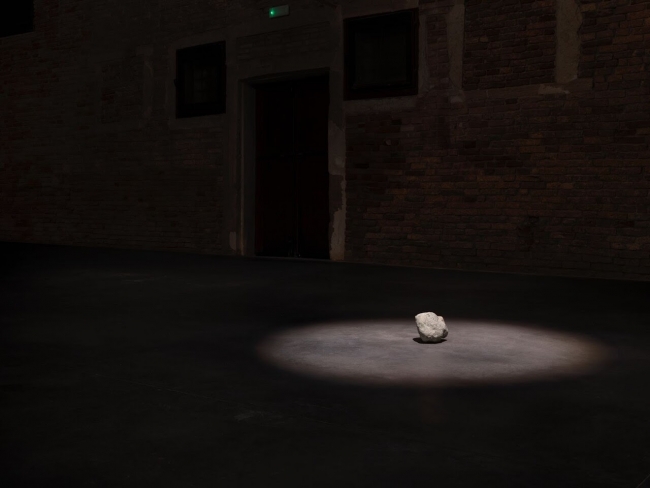Descripción de la Exposición
The Argentina Pavilion presents Ojalá se derrumben las puertas [Hope the Doors Collapse], a new major sculptural work by Argentine artist Luciana Lamothe. The four sculptures that make up the installation, address objects (human, infrastructural, industrial and “natural”), their latent potentials and the spatial field in which they exist in order to test alternatives to their familiar forms of interaction. To do this, Lamothe offers a specific set of tools and perspectives that allow us to observe, represent and analyse our constructed environment and the structures humans have designed or occupied over time. Her systems of scaffolding and phenolic plywood infiltrate architecture and infrastructural forms to reveal the layers of techno-textures, information, history and relationships that make up their quasi-industrial, quasi-natural bodies. By displaying the dismantled innards of our constructions and recomposing them in new, unexpected spatial formulations, Ojalá se derrumben las puertas insists on the possibility of effecting changes to our constructed environment and so also to the webs of relations and interactions that shape the world.
If the artist’s earlier works put increasing strain on the materials to the point of blurring the lines between flexibility and rigidity, softness and hardness, the industrial and the natural, Ojalá se derrumben las puertas takes these dualities into radical territory. It establishes an affective relation with the material world to suggest a potential form of living, thinking and feeling. The work posits matter as a principle of the real and a common horizon of all there is in order to provoke a series of displacements in constructive systems and the relations we build with our environment and with each other. In search of these new forms and sensibilities, the artist expands on her previous investigations into the functions, limits and potential of materials and their interactions with architecture with the aim of subverting some of its traditional imperatives and uses. The work, a tangle of steel and wood, thus positions the visitor in an environment whose forces manifest their own agency and erode the anthropocentric ontology of modernity.
Lamothe’s meticulous manipulation of the material world combines elements and sequences of reactions, weights and counterweights, invoking more-than-human alliances and a spatial alchemy that generate new formal, aesthetic and affective possibilities for the bodies and objects they contain. She creates undisciplined spaces opposed not only to the constructive forms of modernity but also rebelling against the violence that subjects territories and human and non-human bodies to a system of extractivist exploitation. Each sculpture functions as an enveloping inhabitable space that suggests other ways of conceiving our relationship with the world. At the same time, they contain forms of care and violence that are manifested in the slashes, joints, assemblages and torsions essential for the work to keep its form: a series of wounds and sutures that acknowledge the burden of centuries of social, spatial and material conditioning on human and non-human bodies.
Constructed entirely in the pavilion, the structures manipulate iron scaffolding and plywood boards into curves and counter-curves, and, in their interstices, house a series of objects embodying different stages in the life of wood: from its origin, through its extraction as a commodified resource and its industrialization, to its disposal as organic or industrial waste. The work brings together industrial materials and others collected from nearby areas, such as local workshops and a small forest in Slovenia. It also reutilises materials gathered during the dismantling of the last Architecture Biennial. This approach to materials, which Lamothe calls “monomateriality,” forces us to pay unusual attention both to the structures and the materials, to experience them as part of a supportive system of interconnected subsistences and to establish a sensual, affective relationship with materials.

Exposición. 20 abr de 2024 - 24 nov de 2024 / Palazzo Cavalli/Franchetti / Venice, Veneto, Italia

Exposición. 19 abr de 2024 - 24 nov de 2024 / Teatro Fondamenta Nuove / Venice, Veneto, Italia

Exposición. 17 abr de 2025 - 03 sep de 2025 / Centro Cultural Andratx (CCA) / Andratx, Baleares, España

Formación. 08 may de 2025 - 17 may de 2025 / Museo Nacional Centro de Arte Reina Sofía (MNCARS) / Madrid, España